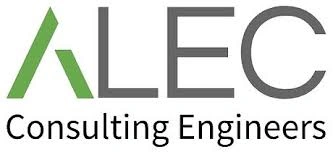
In the fast-paced world of technology and innovation, the concept of digital twins has emerged as a game-changer. Digital twins, though not a new concept, have gained significant traction in recent years. They are poised to revolutionize various industries, from manufacturing and healthcare to urban planning and beyond. In this blog, we’ll explore what digital twins are, their applications, and the potential they hold for the future.
What Are Digital Twins?
A digital twin is a virtual representation of a physical object or system. It’s not just a simple 3D model; it’s a dynamic, data-driven model that mirrors the real-world counterpart in real time. This means that the digital twin is continuously updated to reflect changes and gather data from sensors, IoT devices, and other sources.
Think of it as a bridge between the physical and digital worlds. It enables organizations to monitor, analyze, and simulate the performance of physical assets, processes, or systems in a controlled virtual environment. This offers an unprecedented level of insight and control.
Applications of Digital Twins
Manufacturing: In the manufacturing industry, digital twins are used to create virtual replicas of production lines and individual machines. This helps in monitoring equipment health, predicting maintenance needs, and optimizing production processes. By simulating changes and improvements in the digital twin, manufacturers can reduce downtime and increase efficiency.
Healthcare: Digital twins are making waves in personalized medicine. They can create a digital replica of a patient’s organs, which enables doctors to perform virtual surgeries and test various treatment scenarios. This not only enhances the accuracy of medical procedures but also minimizes risks.
Urban Planning: City planners use digital twins to model and analyze the impact of urban development projects. This can range from traffic management and energy consumption optimization to disaster preparedness. It helps in making informed decisions that benefit both citizens and the environment.
Energy Management: Digital twins are utilized in the energy sector to optimize the performance of power plants and distribution networks. By continuously monitoring the digital twin of a power plant, operators can identify and address issues in real time, reducing downtime and improving energy efficiency.
Aerospace: In aerospace, digital twins are crucial for the design, testing, and maintenance of aircraft. Engineers can create digital twins of complex components like jet engines and monitor their performance in real time. This is invaluable for ensuring safety and reliability.
The Future Potential
The potential of digital twins is immense, and it’s only just beginning to be harnessed. Here are a few ways in which digital twins could shape the future:
Smart Cities: As urbanization continues, digital twins will become an essential tool for managing the challenges of modern cities. They will help in optimizing traffic flow, energy consumption, waste management, and disaster response.
Healthcare Advancements: Digital twins could lead to more precise and personalized healthcare. Instead of generic treatments, doctors could simulate the effectiveness of various treatments for individual patients.
Sustainability: Environmental concerns are pushing industries to reduce their carbon footprint. Digital twins can play a vital role in optimizing processes to be more eco-friendly. This might include reducing energy consumption in manufacturing or finding the most efficient routes for transportation.
Education and Training: Digital twins can be used in educational settings to provide hands-on training and simulation experiences. This can be particularly useful for fields like engineering, where practical experience is crucial.
Space Exploration: Even the final frontier can benefit from digital twins. They can simulate spacecraft and planetary environments, aiding in mission planning and troubleshooting.
While the potential is exciting, it’s crucial to address the challenges that come with digital twins. Data security and privacy are paramount, as the information collected from real-world counterparts can be sensitive. Additionally, the development and maintenance of digital twins can be resource-intensive, making it important to weigh the benefits against the costs.
Digital twins are more than just a technological novelty; they represent a fundamental shift in how we interact with and understand the physical world. The ability to create virtual replicas of real-world objects and systems opens up a world of possibilities for innovation and efficiency across various sectors. As technology continues to advance, we can expect to see digital twins play an increasingly significant role in shaping the future. It’s a thrilling prospect, one that promises to bring about a more connected, efficient, and sustainable world.
Draftech – Your Project, Our Expertise
Testimonials
Thank you for all your efforts on our projects; they have been an invaluable contribution to their success. We look forward to working with you on future projects.
Ian Ferguson MPM Group
Jess and Karl at Draftech were amazing. The communication from the start was prompt, and the entire process was extremely easy. We needed their knowledge on Air Schematics, and they had made one up for our buildings that we service. Thanks so much, and we will be using you guys in the future. Cheers, Air Control Australia.
Greg Colebrook AirControl Australia
With Draftech’s thorough understanding of building services modelling and close attention to detail, Forth has been afforded the opportunity to outsource some of our BIM projects with absolute confidence in the accuracy of the final product.
Gary Murdoch Forth Consulting
Very professional and efficient organization. Delivered a great product to a tight deadline.
ACE Power
Karl and the team are very professional and have a vast knowledge of BIM coordination.
Dwayne Willaims Babinda Electrics
We had multiple large projects with tight deadlines and needed a company we could trust. The teams delivery, attention to detail and understanding of what is being designed is always executed to a high standard.
Martin O’Donovan Envar Engineers
Draftech offered a flexible and reliable approach to working collaboratively with our team. They met our expectations and quality requirements and also offered up new ideas.
Draftech have proven to be a valuable and trustworthy resource and we will continue to work with Draftech on other projects.
Simon Marsden Umow Lai
Draftech is different from others in the professionalism and features they provide.
The ability to walk through projects in real time online provides invaluable insight into problem areas and helps provide an efficient resolution on the spot without many phone calls, emails and the necessity for us to paw through countless drawings to understand the issues.
Todd Morris Manager - Air mech
Draftech were put forward to FIP Electrical as the solution to Coordinate, Model, carry out clash detection, provide Electrical Services Shop Drawings, as built documentation and completed electrical model.
Simon Thorpe FIP Electrical
In close collaboration Draftech set up all our systems and model deliverables. In this process Draftech have proven to be a valuable resource for us and demonstrated commitment, understanding and professionalism.
David Skelley DJCoalition
Draftech’s attention to detail and proactive nature throughout the project assisted us in identifying issues before becoming evident on site, saving us both time and unexpected costs.
Matt Payne PJM Engineering Services
They delivered very high quality Revit models and associated 2D documentation at key milestones, working to a tight budget and in strict accordance with the Architects’ BIM requirements.
Peter Thomas Geoff Hesford
We found Draftech’s work to be of high standard and the team delivered exactly as agreed, in fact, when we considered the project complete, Draftech put further resources into the project as they were not satisfied.
John Johnson Beca
Engaging Draftech during design gave us the tools to make smart decisions.
Hansen Yuncken Design Manager - Michael Harkins
The drafting service is timely, reliable and fit for purpose for the built environment.
Peter Harvey Harvey Industries
Draftech stands apart from other drafting services that we have previously used in their attention to detail and ability to adapt to the individual client’s requirements.
Doug Holt McCaig Aircon
I can confidently recommend Draftech as a solid and reliable supplier, and experts in their field. I look forward to working with them again in the near future.
Chris Behan Norman Disney & Young
After seeing the benefits Draftech provided us on the Townsville Hospital Redevelopment we have set up a relationship with Draftech and intend to continue to use their BIM knowledge and skills for our future projects.
Brad Lund Energy Power Systems
Draftech has no competition as they are in a class of their own.
John Boyes Babinda Electrics
Draftech Developments Drafting and Design Capabilities, in conjunction with their outstanding level of Client service and support has provided great solutions to our engineering and Drafting Design portions within our Gorgon Barrow Island Project.
Aaron Hazelton Applied Electro Systems Pty Ltd
Draftech set up necessary systems and workflows very quickly, but also setup auditable estimating and weekly cost tracking processes that we utilised, requiring little maintenance.
TOM PURDON MPM GROUP
































